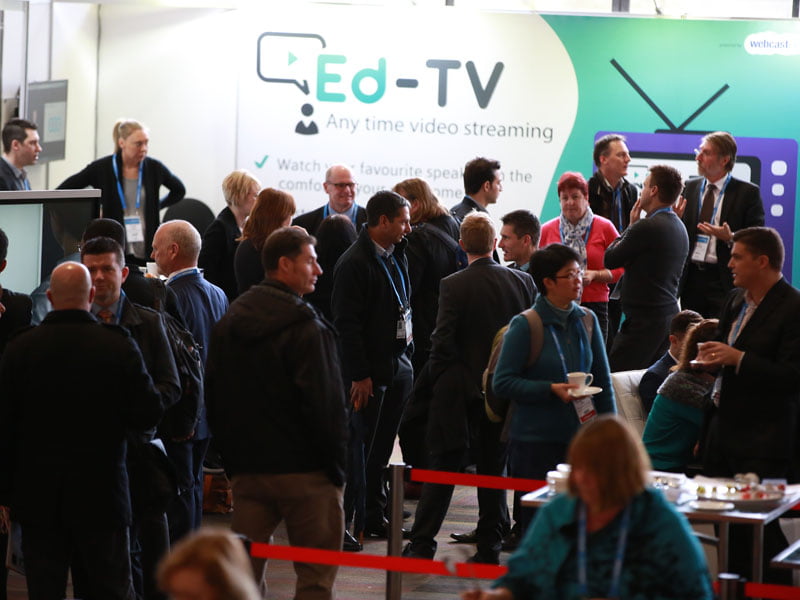The ninth annual ‘Technology in Government’ conference and exhibition has closed its doors in Canberra for another year after two days of deliberations that focused on the key themes of Digital Transformation, security, and technology procurement.
All levels of government were represented. InnovationAus.com drove to a freezing Canberra to wander the halls of #TechInGovAU exhibition, and to sit through some excellent keynotes. We have put together some key takeaways.

The Carrot and the Stick
Culture is derived from the top, but change must come from the bottom up. US President Barack Obama’s hand-picked former Chief Technology Officer says cultural change is the central pillar of any digital transformation strategy.
The biggest obstacle to the change process rests with the often weird and always powerful dark arts of Government procurement practices. In the modern world it is impossible to change entrenched organisational processes without significant change to its supporting digital technology.
And if you are not thinking differently about how you procure your people and technology, you are going to struggle to deliver your digital services. Of all the battles in government regarding the introduction of digital services, the bloodiest will almost certainly by about procurement practices.
Latent Demand
There is an enormous appetite for digital government services, according to the Australian Taxation Office’s Chief Information Officer Jane King. She knows this because when the Office has launched a popular new service, it has attracted a million uses within a week – without any formal promotion.
That kind of take-up makes the result worth the battle. The ATO is a big believer in getting strategy right. Ms King says the strategy has to fit the culture – and if it doesn’t, then the culture has to change.
“We are very conscious that if we don’t get the culture right, as it is famously said, strategy is a wonderful thing but culture eats strategy for breakfast every morning,” Ms King said.
Delivery is Capital
The Digital Transformation Office’s new Chief Executive Officer Paul Shetler is all about delivery. To everyone who has asked about what the DTO strategy will do to get digital services off the ground in government, he has a one word answer: ‘Delivery’.
Actually, it is slightly more complicated than that. He says Delivery is like capital. Every time you deliver something in government, you earn some capital (which you can use to deliver something else.) And so the strategy is a delivery.
Of course there are culture wars and procurement bun-fights to be had along the way, but these are tactical issues. Delivery is the central strategy.
No clues yet about what Mr Shetler and his DTO team will focus their attention on. A team is being built – a crack multi-disciplinary squad of commandos – to parachute into a yet un-named task to build/fix/deliver/iterate.
Chocks away, old chap!
Find a Big Stick
James Duncan, who runs the UK Government’s Public Sector Network inside the Cabinet Office says it is useful to have friends in high places. In the case of the UK, Mr Duncan’s eyes shone with fond memories as he talked about former Cabinet Secretary Francis Maude reading the Riot Act to recalcitrant vendors.
This is not about political patronage, but rather the exercise of raw power to get things done. In this case, Mr Duncan was talking about contract renegotiations with entrenched vendors across government.
Theodore Roosevelt was certainly right when he talked about the speaking softly while carrying a big stick. This is very helpful advice to any public servant – in this case Mr Duncan – dealing with massive technology corporation who are trying to bend national policy.
But it’s always good to have a backup – the ‘iron fist inside the velvet glove’ – which of course was Francis Maude.
The DTO’s Mr Shetler does not have this – despite the patronage of Communication Minister Malcolm Turnbull. And the fact that procurement policy is buried deep within a different department makes things difficult.
Still, Canberra is a funny place. Things change very quickly. Mr Shetler may get his big stick soon enough.
E-Voting Scares Americans
Australians are leaders in the emerging field of electronic voting. But the Americans are unimpressed. NSW Electoral Commission Chief Information Officer Ian Brightwell says at the last state election more than 283,000 people relied on its iVote system to cast their ballot.
The system used made up about 5 per cent of the ballot, mostly from people who were unable to make it to the ballot in person (for a variety of reasons, but including physical impairments such as the blind.)
Mr Brightwell says with the gradual demise of the postal service through Australia Post, increased use of iVote is inevitable. He says the checks and balances in place make it as secure as the manual system.
Even so, at this point the NSW Electoral Commission does not want to see the proportion of electronic votes grow to more than 15 per cent in the medium term.
The Americans are nonplussed. Perhaps scarred by the Gore-Lieberman debacle, it’s a bit of a no-go zone according to Aneesh Chopra. He says all the available electronic voting platforms available today have been shown to be open to hacks.
Which is a bit deflating.
Do you know more? Contact James Riley via Email.

